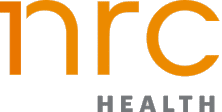SPM Board Meeting-20120119 1715-1
Thursday, January 19, 2012 12:15 pm EST
Time 1 Hour 17 Minutes
1/19/12 9am PT/noon ET
1. Welcome, and Minutes: – Alan Greene
‘Update’ items below are chances to hear quickly what is going on as a springboard to focused conversation. We’re looking for the group to give feedback/fresh ideas/fresh connections to those implementing. Votes are not needed for the ‘update’ items. Input to advance these areas is. 2. One-minute snapshots: Quick check-in from each board member. What’s new in your participatory world?
- Members went around and shared updates, projects, and thoughts on the course of PM
2. Update on Membership/Finances (5-10 minutes) – John Grohol
- ~$81k in bank account, 280 individual members, 19 innovator organizations, 2 corporate bronze members, and Mitchell Foundation’s continuing support.
3. Governance – Alan Greene (20 minutes)
- Chief Communication Officer – we want this position to be someone who can establish high level connections with leadership, have volunteers as do-ers, and maintain a more of a visionary perspective about how to develop our communication platform. This will also provide structure to avoid existing disconnects between leadership and communication team (one of the most active volunteer teams)
- Motion passed
- Exec team will further develop key criteria for position
- Dave notes that it’s a different communications agenda to do a professional media outreach than it is to develop an online community
- Members at Large – Should the members at large be elected by the membership?
- There is a concern about the disruptive nature of bringing any new person on – the board might want to have more of a say
- Sarah suggest that the Exec Committee nominates Members at Large and then letting members vote
- Motion to have Exec/Nominating Committee develop a slate of candidates for two members to be elected by the membership – Motion passed
- Select one new board member to invite (bios distributed) of four total to join board throughout this year. Nominees for new Board positions will be voted on via Survey Monkey
- Advisory Board Created This is a position that will help us stay in contact with high-powered ex-board members. We want to create an formal open door policy for future SPM Board members to contact leaders in the field. Without this position we run the risk of hollowing out our leadership. Board of Advisers motioned for and created.
- Position Motioned for and created
4. Strategic Planning Update – Sarah Krug (10 minutes)
- This might need more detail on the Exec call – not sure how much time we had to discuss
5. Seal Program Update – Alan Greene and Indu Subaiya (15 minutes)
- Lot’s of interest from multiple sectors and people willing to help
- We’d like to compliment this with a CME course eventually
- “Last year here at Health 2.0 we crowd-sourced comments on our draft guidelines for Participatory Medicine (originally authored by Indu Subaiya, Carol Peckham, and Alan Greene). We’ve incorporated feedback obtained here….”
Lot’s of interest from multiple sectors and people willing to help. Eventually, we’d like to compliment this with a CME course.
Last year here at Health 2.0 we crowd-sourced comments on our draft guidelines for Participatory Medicine (originally authored by Indu Subaiya, Carol Peckham, and Alan Greene). We’ve incorporated feedback obtained here and subsequently throughout the year and are now back with the results. While preserving the deeper guidelines as a resource, we’ve focused the dozens of guidelines down to 4 simple, actionable, measurable Goals that will be the basis of a Seal Program identifying providers willing to make these commitments. These Goals were selected both to recognize who is practicing Participatory Medicine and to actively engender greater participation. The initial target is to have 10,000 clinicians obtain the Seal.
1) Health Data in the Hands of Patients. Participatory providers will proactively provide direct access to laboratory values and other health data as a matter of course. “We’ll call you if there’s an abnormal result,” has no place in Participatory Medicine.
2) Feedback from Patients. Participatory providers will encourage patient feedback and make arrangements for anonymous feedback mechanisms.
3) Patient Advisory Council. Each participatory provider will convene a group of patients to provide input and feedback. The group could do its work formally or informally, virtually or in person. They will consider suggestions and feedback provided by other patients.
4) Resources in the Hands of Patients. Participatory providers will provide resources for additional learning about every diagnosis made (including age-appropriate health maintenance for a normal physical exam). These resources may be physical handouts, web Urls, book titles, the names of mobile apps, etc.
Providers committing to these four items could be nominated by patients, peers, or themselves to receive the Society Seal. We would maintain a public list of these providers and the opportunity for patients to comment on these four aspects of Participatory Medicine in the practice. We intend to collect the best stories of e-patients and participatory providers and feature them on a panel here next year.
6. Journal Update – Terry Graedon (10 minutes)
- Medline probably won’t be considered until spring
7. E-Patients.net Update – Dave deBronkart (10 minutes)



